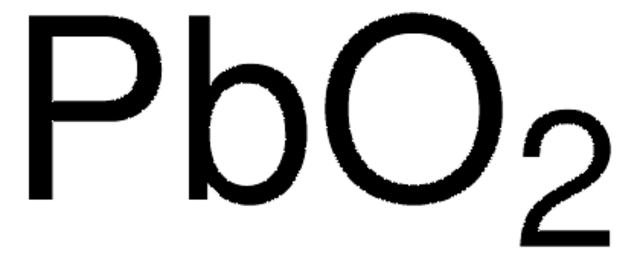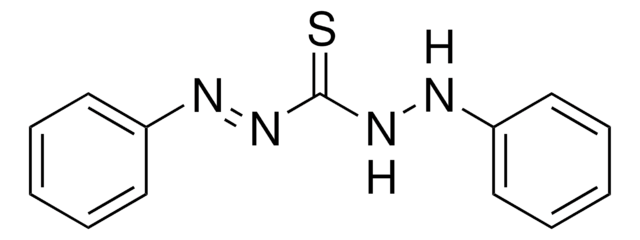15338
Lead(II) oxide
puriss. p.a., ≥99.0% (KT), yellow
About This Item
Produits recommandés
Pression de vapeur
10 mmHg ( 0 °C)
Qualité
puriss. p.a.
Essai
≥99.0% (KT)
Forme
powder
Impuretés
≤0.001% total nitrogen (N)
Couleur
yellow
pH
9.9 (20 °C, 100 g/L)
Pf
886 °C (lit.)
Traces d'anions
chloride (Cl-): ≤20 mg/kg
Traces de cations
Ca: ≤10 mg/kg
Cd: ≤5 mg/kg
Co: ≤5 mg/kg
Cr: ≤5 mg/kg
Cu: ≤5 mg/kg
Fe: ≤10 mg/kg
K: ≤50 mg/kg
Mg: ≤5 mg/kg
Mn: ≤5 mg/kg
Na: ≤50 mg/kg
Ni: ≤5 mg/kg
Zn: ≤5 mg/kg
Chaîne SMILES
O=[PbH2]
InChI
1S/O.Pb
Clé InChI
YEXPOXQUZXUXJW-UHFFFAOYSA-N
Vous recherchez des produits similaires ? Visite Guide de comparaison des produits
Catégories apparentées
Description générale
Lead(II) oxide is a crystalline solid, which can be prepared by decomposition of lead carbonate or by heating molten lead in the presence of air. It can be used in the synthesis of lead(II) ethanoate by reaction with ethanoic acid.
Mention d'avertissement
Danger
Mentions de danger
Conseils de prudence
Classification des risques
Acute Tox. 4 Inhalation - Acute Tox. 4 Oral - Aquatic Acute 1 - Aquatic Chronic 1 - Carc. 2 - Lact. - Repr. 1A - STOT RE 1
Organes cibles
Central nervous system,Kidney,Blood
Code de la classe de stockage
6.1D - Non-combustible acute toxic Cat.3 / toxic hazardous materials or hazardous materials causing chronic effects
Classe de danger pour l'eau (WGK)
WGK 3
Point d'éclair (°F)
Not applicable
Point d'éclair (°C)
Not applicable
Faites votre choix parmi les versions les plus récentes :
Certificats d'analyse (COA)
Vous ne trouvez pas la bonne version ?
Si vous avez besoin d'une version particulière, vous pouvez rechercher un certificat spécifique par le numéro de lot.
Déjà en possession de ce produit ?
Retrouvez la documentation relative aux produits que vous avez récemment achetés dans la Bibliothèque de documents.
Les clients ont également consulté
Notre équipe de scientifiques dispose d'une expérience dans tous les secteurs de la recherche, notamment en sciences de la vie, science des matériaux, synthèse chimique, chromatographie, analyse et dans de nombreux autres domaines..
Contacter notre Service technique













